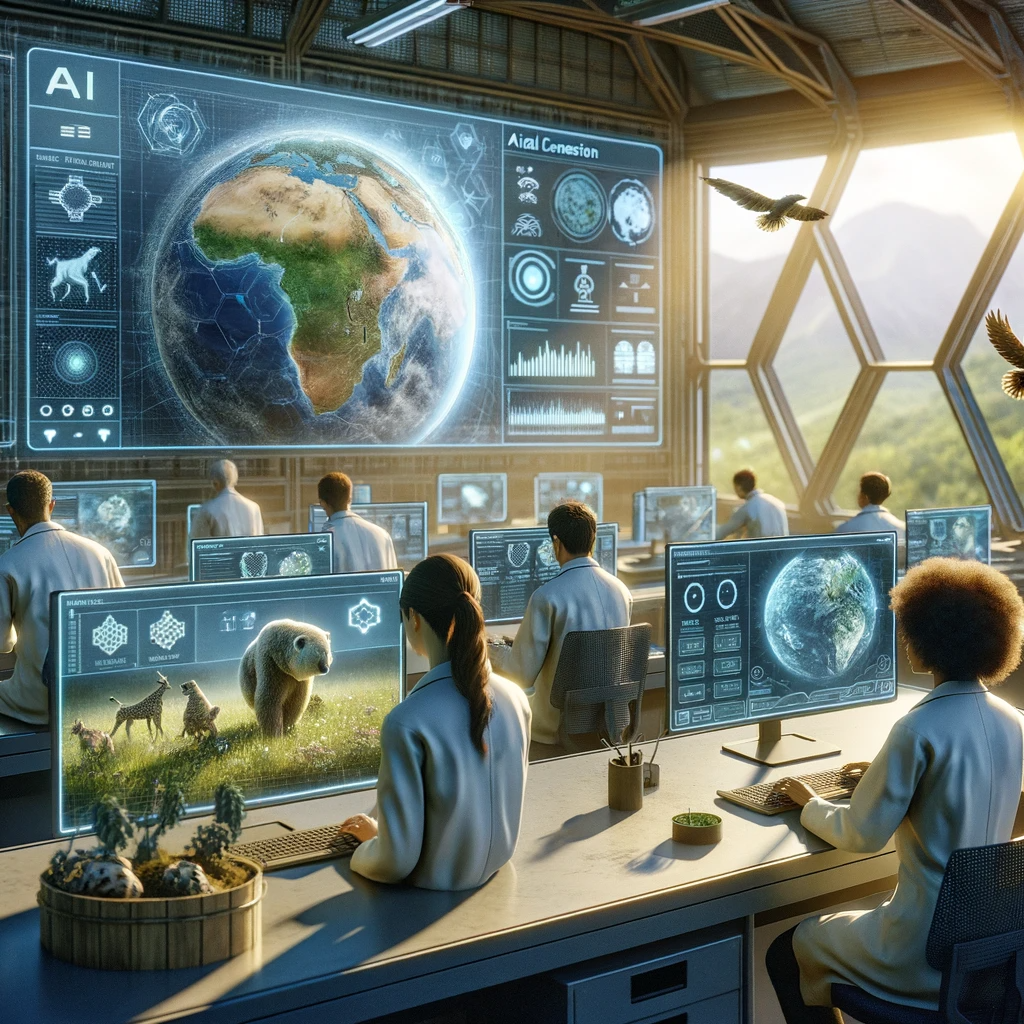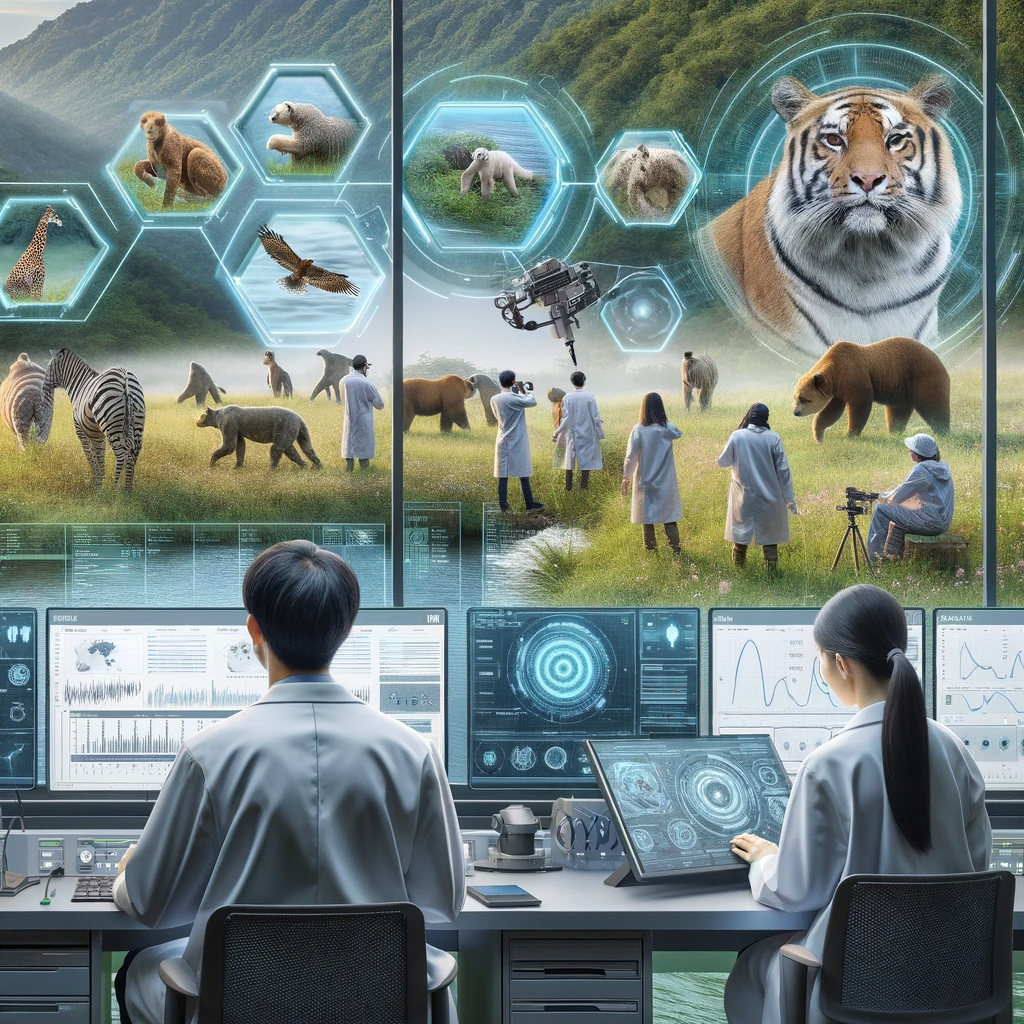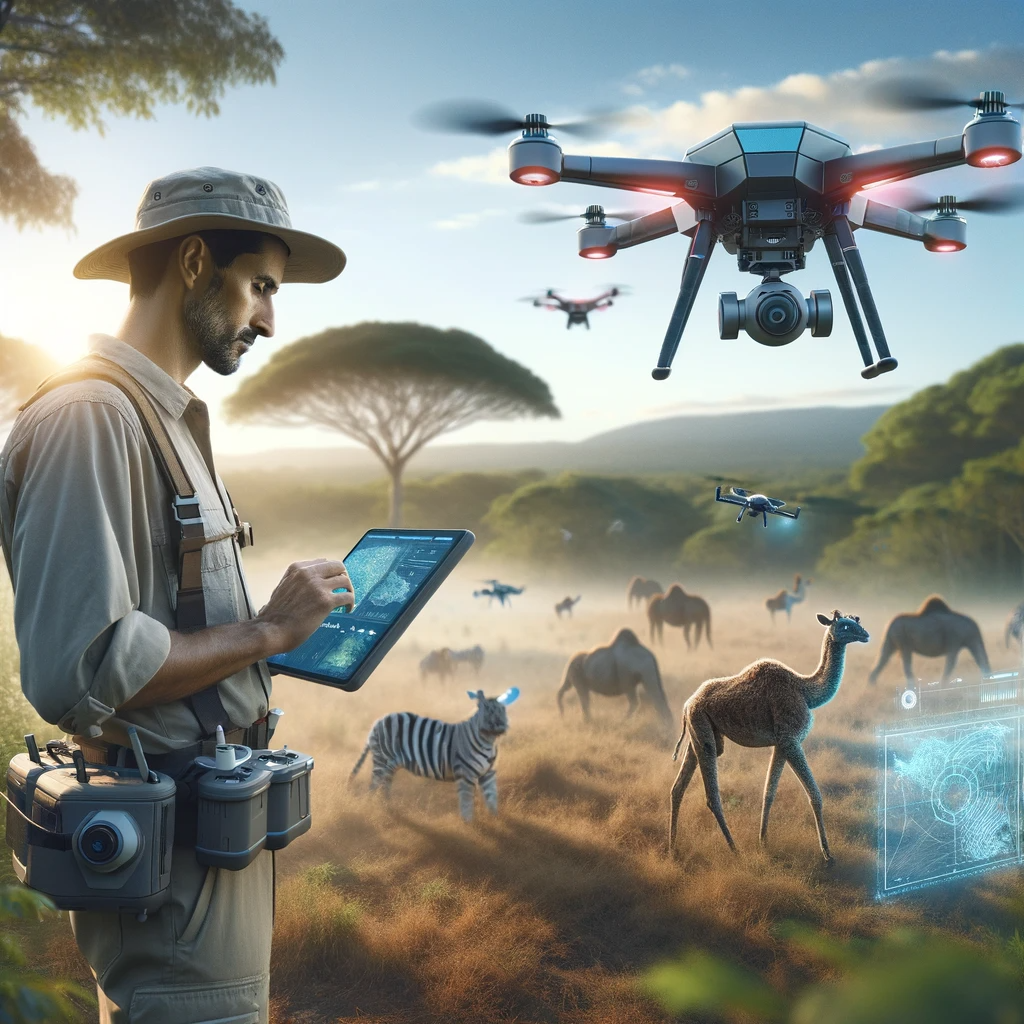Wildlife conservation is an essential endeavor, crucial for maintaining biodiversity and preserving the intricate balance of ecosystems. In recent times, the challenges in protecting endangered species and their habitats have escalated, owing to factors like habitat destruction, climate change, and poaching. As these challenges grow more complex, innovative solutions become imperative for effective conservation strategies.
Enter Artificial Intelligence (AI), a technological advancement with the potential to revolutionize wildlife conservation. AI offers promising applications in areas such as species monitoring, habitat analysis, and anti-poaching efforts. Its ability to process vast amounts of data quickly and accurately can provide conservationists with deeper insights and more efficient methodologies.
This article delves into the question: How can AI technology be harnessed to aid wildlife conservation? We will explore the various applications of AI in monitoring wildlife populations, combating poaching, managing habitats, and addressing broader ecological challenges. Additionally, we’ll discuss the challenges and ethical considerations of integrating AI into conservation efforts. The article will conclude by speculating on future advancements in AI that could further revolutionize the field of wildlife conservation. Through this exploration, we aim to uncover the potential of AI as a pivotal tool in the ongoing battle to protect our planet’s wildlife and ecosystems.

The State of Wildlife Conservation
Wildlife conservation faces an array of daunting challenges in the modern world. Habitat loss, driven by deforestation, urbanization, and agricultural expansion, has become a primary threat to biodiversity. Poaching, driven by the illegal wildlife trade, continues to decimate populations of various species, including elephants, rhinos, and tigers. Additionally, climate change exacerbates these challenges, altering habitats and affecting wildlife in unpredictable ways.
In the face of these challenges, technology has become a crucial ally. Satellite imagery, GPS tracking, and other technological advancements have significantly enhanced conservation efforts. Historically, technology in wildlife conservation was limited to basic tools like radio collars for tracking. However, recent years have seen a surge in the use of more sophisticated technology, including drone surveillance, advanced data analytics, and now, Artificial Intelligence (AI). These technological evolutions represent a paradigm shift in how conservation efforts are conducted and managed.
AI in Wildlife Monitoring and Data Analysis
AI is revolutionizing the way wildlife populations and habitats are monitored and analyzed. By leveraging machine learning and complex algorithms, AI systems can process vast amounts of data from various sources, including satellite images, sensor networks, and camera traps. This capability enables a more detailed and comprehensive understanding of animal movements, population sizes, and behavioral patterns.
For example, AI has been employed to analyze camera trap images, automating the identification of individual animals and species, a task that was previously time-consuming and prone to human error. In marine biology, AI algorithms analyze acoustic data to monitor the presence and movements of cetaceans (whales and dolphins) in vast ocean areas. Another notable application is the use of AI in analyzing satellite imagery to track changes in habitats and detect illegal logging activities.
Case studies demonstrate AI’s effectiveness in these monitoring efforts. For instance, AI-assisted drone surveillance has been used to monitor orangutan populations in Borneo, providing crucial data for conservation strategies.

AI in Anti-Poaching and Protection Efforts
AI is playing a significant role in anti-poaching and protection efforts. Through AI-powered surveillance systems, including drones and automated cameras, conservationists can monitor vast areas of wilderness in real-time, significantly improving the detection of illegal activities. AI algorithms can analyze video feeds to identify suspicious behavior, track vehicles in protected areas, and even detect gunshots.
For instance, in Africa, AI systems are being used to analyze data from drones and sensors to predict poaching threats and deploy rangers more effectively. In India, AI-powered camera traps are helping to protect tiger populations by providing round-the-clock surveillance and instant alerts about potential poaching activities.
These AI-based systems have led to notable successes in reducing poaching. In wildlife reserves where they have been implemented, there have been significant decreases in illegal hunting activities, directly contributing to the protection and recovery of endangered species. The integration of AI into anti-poaching strategies represents a crucial advancement in wildlife conservation, combining technological innovation with on-the-ground efforts to protect vulnerable wildlife.
AI in Habitat Preservation and Ecosystem Management
Artificial Intelligence (AI) is increasingly being used to analyze and preserve various ecosystems and manage biodiversity effectively. By processing large datasets from satellite imagery, climate models, and biological surveys, AI can assess ecosystem health, identify patterns of biodiversity, and pinpoint areas at risk. This analysis is crucial in developing targeted conservation strategies and habitat restoration plans.
AI’s predictive capabilities are particularly valuable in assessing the impacts of climate change on wildlife. Through advanced modeling, AI can forecast changes in habitats, predict species migration patterns, and anticipate the emergence of climate-induced threats like wildfires or floods. This predictive power allows conservationists to implement proactive measures to protect species and habitats from the adverse effects of climate change.
Furthermore, AI plays a significant role in natural resource management. It aids in sustainable land use planning, helps in monitoring the health of forests and water bodies, and contributes to the effective management of protected areas. For example, AI-driven models are used to optimize the location of new protected areas, ensuring maximum conservation impact with minimal resource use.
Challenges and Ethical Considerations
Implementing AI in wildlife conservation presents several challenges and ethical considerations. One significant limitation is the quality and availability of data. AI systems require large amounts of accurate and representative data to make reliable predictions and analyses. In many conservation areas, especially in developing countries, such data may be scarce or of poor quality.
Ethical concerns also arise, particularly regarding surveillance and data privacy. The use of AI in monitoring wildlife and habitats often involves extensive data collection, which could potentially infringe on the privacy rights of local communities or indigenous peoples living in or near conservation areas.
Another critical consideration is the balance between technological intervention and maintaining natural ecosystem dynamics. There is a risk that over-reliance on technology might lead to interventions that disrupt natural processes or overlook traditional conservation knowledge. It’s essential to ensure that AI is used as a tool to complement, not replace, traditional conservation methods and ecological understanding.
In summary, while AI offers significant benefits in habitat preservation and ecosystem management, its application must be carefully managed to address data limitations, ethical concerns, and the balance between technology and nature.
Future Directions and Potential Developments
The future of AI in wildlife conservation is marked by immense potential and exciting possibilities. Advancements in AI could lead to more sophisticated and nuanced conservation tools. For instance, the development of AI algorithms capable of understanding complex ecological interactions could provide deeper insights into how best to protect diverse ecosystems. Improved image and sound recognition technologies could offer more accurate monitoring of elusive or rare species.
The potential of AI to revolutionize wildlife conservation is substantial. As AI systems become more adept at analyzing ecological data, they could facilitate more effective decision-making in conservation policy and management. This includes predictive modeling for biodiversity hotspots, real-time monitoring of species health, and automated responses to environmental changes.
Collaboration between technologists, conservationists, and governments will be crucial in realizing the full potential of AI in conservation. By combining technological expertise with ecological knowledge and policy-making, AI can be effectively integrated into conservation strategies. Governments can provide support in terms of funding, policy frameworks, and facilitating cross-sector collaborations, ensuring that AI applications align with conservation goals and ethical standards.

Conclusion
The integration of AI into wildlife conservation represents a significant stride forward in our efforts to protect endangered species and ecosystems. AI offers innovative solutions to some of the most pressing challenges in conservation, from habitat preservation to anti-poaching efforts. However, it is crucial to integrate these technological advancements with traditional conservation methods, ensuring a balanced approach that respects natural processes and local communities.
As we embrace the potential of AI in conservation, it is essential to ponder the future role of this technology. How will AI shape the future of biodiversity preservation, and what are the ethical implications of relying on artificial intelligence to safeguard our natural world? These questions are not just about the capabilities of AI but also about our responsibilities as stewards of the planet’s rich and diverse life. The journey ahead in AI-driven conservation is not just a technological venture but a testament to our commitment to coexisting harmoniously with nature.
